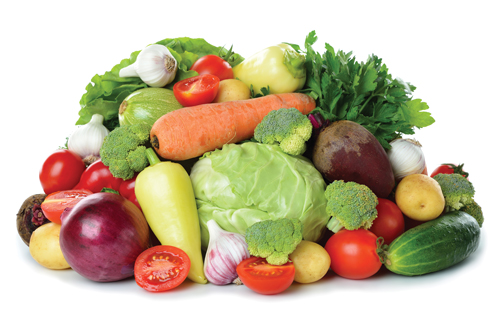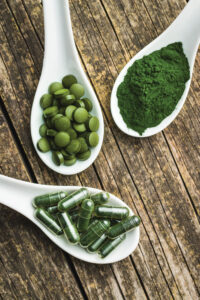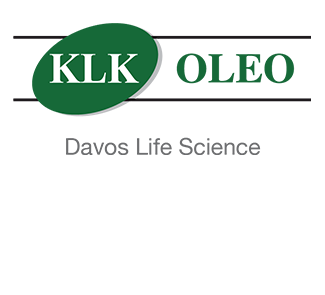One could conclude that raw food predates cooking and, therefore, was the diet of necessity for our earliest ancestors. There is evidence that control of fire by humans may have occurred 400,000 years ago, and some experts would push that date to one million years. Cooking foods expanded the utilization of starchy, hard-to-digest foods and broke down some of the collagen in meats for easier chewing and digestion. Physical changes began to occur with the introduction of cooking. Human teeth became smaller, the jaw less pronounced and the intestinal tract shorter. However, despite the advent of cooking, anthropologists believe that many foods continued to be consumed in their raw state, and even cooked foods were not exposed to heat for the extended periods of time we find in modern cooking.
Extended cooking changes the nature of food and impairs important enzyme activity. This has led to the implementation of raw food diets by people passionate about deriving the most value from their food choices. Raw food diets may vary slightly, but most raw foodists agree that cooking food over 115 degrees Fahrenheit is considered taboo, and some believe that 104 degrees Fahrenheit should instead be the limit. There are many types of raw food diets including: vegetarians, vegans, carnivores, omnivores and even people feeding their allergy-prone pets raw food diets. However, the majority is vegetarian/vegan, or pescetarian (vegetarian predominantly, but allowing fish). There is good science on the way cooking can damage nutritional value. For example, blanching, steaming and high heat or pressure-cooking all significantly affected the amino acid content of Korean vegetables (including root vegetables, leaf vegetables and pulses). Amino acids are the building blocks of protein, and are also used for important biological functions as well. Significant decreases were noted in the amino acids lysine, arginine and cysteine, depending on which method of cooking was used. (Kim SY, et al. 2014) In another study using the Brassicaceae family of vegetables, which included kale, broccoli, Brussels sprouts, white and green cauliflower, similar results were obtained. The vegetables were either fresh, blanched, cooked, frozen or cooked after freezing and then freeze-dried. Compounds that were studied, include phenolic acid and flavonols like kaempferol and quercetin—important antioxidants. However, after hot water processing, upwards of 70-80 percent of the beneficial compounds were lost.
Many people enjoy adding garlic to their meals but certain beneficial compounds in garlic are subject to degradation by heat. Three types of garlic from Poland, Ukraine and Israel were used in a study on the changes in fresh compared to cooked garlic. After 20 minutes of cooking at 212 degrees Fahrenheit, significant decreases in biological activity, antioxidant capacity (determined by four different scavenging methods) and protein content were observed. It has been suggested that when cooking with garlic, it should be added near the end of the cooking process to preserve beneficial compounds.
Consumption of raw, cruciferous vegetables (broccoli, cauliflower, Brussels sprouts, collard greens, kale, cabbage, kohlrabi) has been shown to reduce the likelihood of developing bladder cancer. Cruciferous vegetables are a potent source of isothiocyanates, which have been shown in studies to have anti-cancer properties. In one study, it was found that the more raw cruciferous vegetables a person ate, the lower their risk of bladder cancer. The raw vegetables even offered protection to people who currently smoke cigarettes if they ate a mere three servings of the vegetables a month. (Tang L, et al. 2008)
As far as beverages go, smoothies and fresh-squeezed juices are a favorite among raw foodies. But what about tea? Herbal teas are generally allowed, as long as the actual leaves are sun-dried and not conventionally dried at very high temperatures. Many raw foodists will grow their own herbs at home, like chamomile, peppermint and lavender, and will let the plants sun dry or use a food dehydrator. Herbal teas can also be made using the sun’s energy or letting the tea steep at room temperature, although both methods can take considerably longer than normal tea preparation. Certain tea varieties prefer warmer temperatures, whereas others should be steeped at lower temperatures.
One of the biggest health issues with a vegetarian raw food diet is the lack of vitamin B12, because this vitamin is mainly derived from animal sources. Some raw food devotees may use nutritional yeast to accommodate this need, but the content of B12 can greatly vary between yeast grown on a B12 enriched medium and those grown without. B12 supplementation can resolve this issue. Obtaining vitamin D can also be difficult on a vegetarian raw food diet. Many vegetarians opt for supplementing with D2 (ergocalciferol) as it is a vegan form, but the body utilizes vitamin D3 much better. No animals are sacrificed in its creation, but it is from an animal source—wool oil. There is a compound in sheep’s wool called lanolin that is a rich source of vitamin D3. Therefore, vegetarians that do not want to ingest anything of animal origin might wish to avoid it, but vegetarians that are comfortable with wool products may prefer the D3 form, due to its heightened effectiveness.
Many benefits are reported for raw food diets, including better energy, improved digestion, cancer prevention and even weight maintenance. In a German study, it was found that people on a raw food diet (RFD) were more likely to be underweight/normal weight than overweight/obese. Using body-mass index (BMI) as a measurement, 25 percent of women and 30 percent of men were considered underweight, 70 percent of women and 68 percent of men were considered normal weight, and only 5 percent of women and 2 percent of men were overweight on a raw food diet. By contrast, on average in Germany, 35 percent are overweight. Although weight loss was not the primary goal of most people on the RFD, it seems to be a welcomed side effect. (Strassner C, et al.1997)
Even when individuals only consumed a raw vegetable diet for one week, benefits were observed. In a study, one group ate raw vegetables and the other ate the same diet, but cooked their vegetables in a microwave for two minutes. In the raw vegetable diet, vitamin E and A levels increased in the blood stream, but not in the microwaved diet. Both groups experienced a reduction in urinary sodium, with no significant effect on potassium levels. (Hanninen O, et al. 1992) There is even speculation that a raw food diet may be an effective intervention for certain allergy issues, rheumatoid disorders, and contagious diseases. (Gaisbauer M, et al.1990)
However, there are some concerns when choosing this style of eating.
Raw foods to avoid:
• Buckwheat—when consumed in large amounts, or juiced, can cause photosensitivity. This is due to a compound called fagopyrin to which some people may be hypersensitive.
• Kidney beans—should not be consumed raw because of potentially toxic levels of a compound called phytohaemagglutinin. Soaking the beans for five hours and then cooking drastically reduces this compound.
• Grass pea seeds—certain varieties of raw grass pea seeds of the genus lathyrus can cause tremors and muscle weakness. VR
References:
Berna F, Goldberg P, Kolska L, et al. Microstratigraphic evidence of in situ fire in the Acheulean strata of Wonderwerk Cave, Northern Cape province, South Africa. Proceedings of the National Academy of Sciences, April 2, 2012 DOI: 10.1073/pnas.1117620109
Gaisbauer M, Langosch A. Raw food and immunity. Fortschr Med. 1990 Jun 10;108(17):338-340.
Gorinstein S, Drzewiecki J, Leontowicz H, et al. Comparison of the bioactive compounds and antioxidant potentials of fresh and cooked Polish, Ukrainian, and Israeli garlic. J Agric Food Chem. 2005 Apr 6;53(7):2726-2732.
Hanninen O, Nenonen M, Lin WH, Li DS, Sihvonen L. Effects of eating an uncooked vegetable diet for 1 week. Appetite. 1992 Dec;19(3):243-254.
Kim SY, Kim BM, Kim JB, et al. Effect of steaming, blanching, and high temperature/high pressure processing on the amino Acid contents of commonly consumed Korean vegetables and pulses. Prev Nutr Food Sci. 2014 Sep;19(3):220-226.
Sikora E, Cieslik E, Filipiak-Florkiewicz A, Leszczynska T. Effect of hydrothermal processing on phenolic acids and flavonols contents in selected brassica vegetables. Acta Sci Pol Technol Aliment. 2012 Jan-Mar;11(1):45-51.
Strassner CB, Doerries S, Kwanbunjan K, Leitzmann C. Vegetarian Raw Food Dietary Regimens: Health Habits and Nutrient Intake. Presented as Poster at the Third International Congress on Vegetarian Nutrition, Loma Linda, California USA, March 24-26, 1997.
Tang L, Zirpoli GR, Guru K, et al. Consumption of raw cruciferous vegetables is inversely associated with bladder cancer risk. Cancer Epidemiol Biomarkers Prev.2008 Apr;17(4):938-944.
Cheryl Myers is an integrative health nurse, author, and an expert on natural medicine. She is a nationally recognized speaker who has been interviewed by the New York Times, Wall Street Journal and Prevention magazine. Her many articles have been published in such diverse journals as Aesthetic Surgery Journal and Nutrition in Complementary Care, and her research on botanicals has been presented at the American College of Obstetrics and Gynecology and the North American Menopause Society. Myers is the head of Scientific Affairs and Education for EuroPharma, Inc.




![[Sponsored Video] Special Report: Bergamonte®, the Untold Story](https://vitaminretailer.com/wp-content/uploads/2023/06/sponsored-video-special-report-b-300x169-1707947265.jpg)








